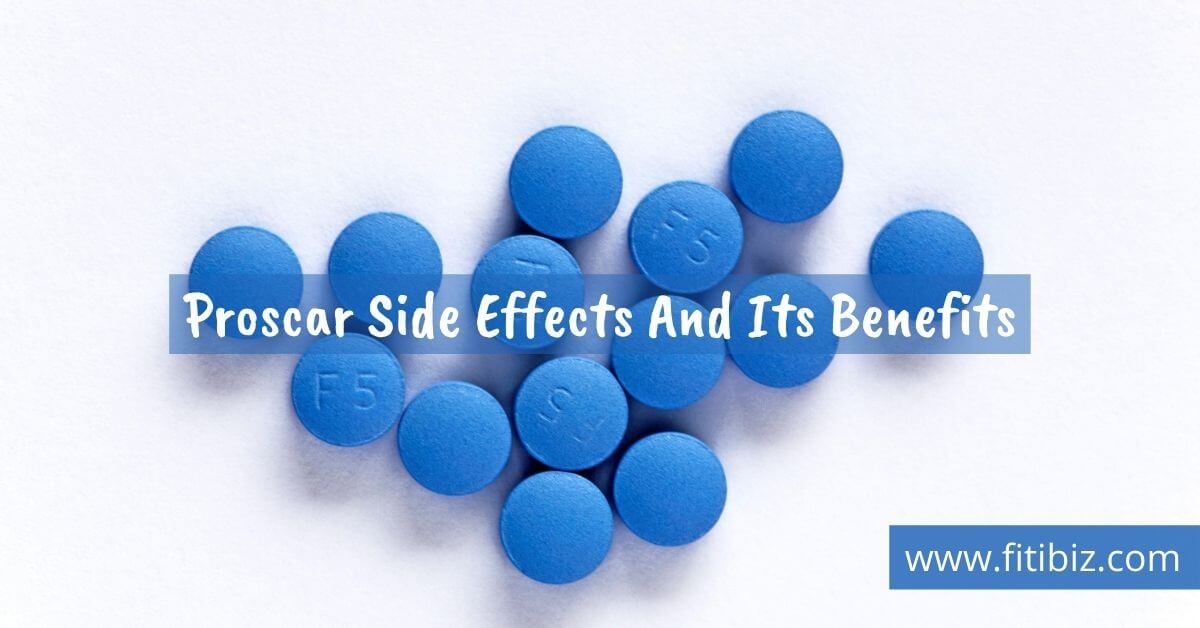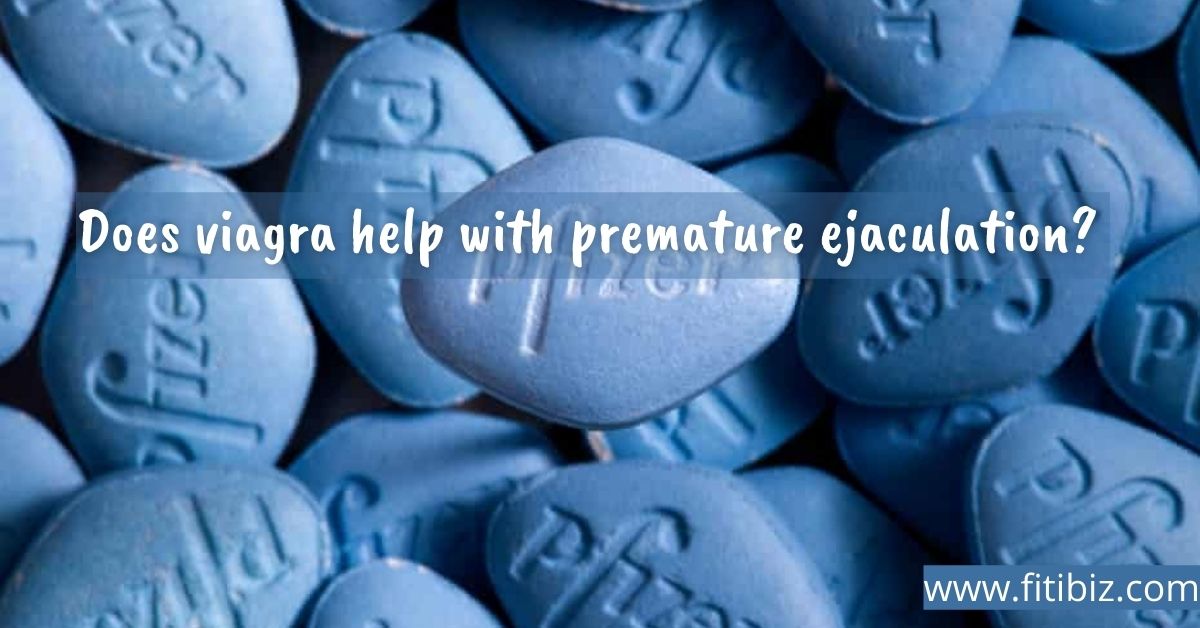Shoulder Pain Causes: Know The Reason
The shoulder has a versatile and wide range of motion. When sometimes something goes wrong with the shoulder, it hampers your ability to move freely and then shoulder pain causes give a great deal of pain and discomfort. The shoulder is a ball-and-socket joint and it has three main bones: the humerus, the clavicle, and the scapula (it is also known as the shoulder blade). The outer edge of the scapula is a ball-shaped part of the humerus bone and then it is made of the glenohumeral joint.
The shoulder joint is a very important joint in the body because of the help of your shoulder forward and backward. The common causes of shoulder pain are soft tissues are injured, muscles are included, tenders, and the ligaments within these structures and this will occur from whiplash or another injury to the painting area.
The degenerative arthritis of the spine in the neck or cervical spine can pinch the nerves and it can cause shoulder pain. Degenerative disc disease in the shoulder can cause local shoulder pain or radiating pain from disc herniation, causing pinching of nerves. Abnormal conditions involving the spinal cord, heart, lungs, and some abdominal organs also can cause shoulder pain.
Causes Of Shoulder Pain
Broken Collarbone:
Your collarbone to break for the cause of your outstretched arm falls and this is common for bicycles when they fall off their bicycles.
Bursitis:
A bursa is a sac over the joints to provide a relief sponge to the joints and muscles. The bursae can become painful, stiff, and swollen after injuries.
Heart attacks:
The problem is the heart and heart attacks can cause shoulder pain, known as referred pain. Left-arm pain or shoulder pain can be a symptom of an impending heart attack the shoulder can begin to hurt as a result of the pain radiating from the chest. If you think you are having a heart attack seek immediate medical attention.
Other symptoms include tightness or pressure in the chest area, sweating, and nausea. A 2016 study published in the Journal of Occupational and Environmental Medicine found that people who are at risk for heart disease may also be more likely to experience shoulder pain.
Broken shoulder blade:
The injury to the shoulder blade is usually associated with relatively forceful trauma.
Rotator cuff injuries:
The shoulder depends on the group of tendons. During lifting tendons can be injured, when playing sports with a lot of throwing, or a long time repetitively used over. It can lead to pain with shoulder impingement syndrome and motion of the shoulder due to eventually to a chronic loss of range of motion of the shoulder or frozen shoulder.
A-C separation or Shoulder:
The ligaments connected with collarbone or clavicle and shoulder blade. These ligaments can be stretched or torn with trauma to the shoulder.
Whiplash injury:
The shoulder can be caused by sudden acceleration or deceleration, as in a car accident that Injured the ligamentous and muscular structures. It can also cause muscle spasms in the shoulder areas.
Tendonitis:
The bones connect with the tendons and muscles. The tendons can become swollen and cause pain with strain. This is also referred to as tendinitis.
Gallbladder disease:
The right shoulder can cause referred pain. The shoulder cause of inflammation under the diaphragm can also cause referred pain.
Rotator Cuff Disorders:
A rotator cuff is a group of muscles and tendons that help to hold the joint in place and move the shoulder. It is a disorder resulting from inflammation or damage to the rotator cuff muscles or tendons or inflammation of the subacromial bursa known as subacromial bursitis.
Caused by
- It occurs with age that general wear and tear.
- The activity that requires constant or repetitive shoulder that especially above shoulder level e.g swimming and painting.
- Trauma and heavy lifting
Serious untreated inflammation and rotator cuff injury of the tendons can cause the rotator cuff to tear.
The pain outside of the shoulder associated with rotator cuff problems is normally felt at the front or particularly when you raise your arm or lift something above your head. You particularly when lying on the affected side may also notice the pain more when lying in bed. Severe injuries can cause restricted shoulder movement and continuous pain and weakness of the shoulder muscles.
Rotator Cuff Tears:
Your rotator cuff is a group of muscles in the shoulder joint in place and helps move the shoulder and tendons. The 4 muscles and the tendons that make up the rotator cuff include:-
(i) Supraspinatus
(iii) Infraspinatus
(iii) Subscapularis
(iv) Teres Minor
It is usually the thick bands of tissue that connect the muscles to the bones that tear, but sometimes the tear occurs in the muscle and rotator cuff tendons. The most common site is the supraspinatus tendon of a tear. The tendons and muscles to tear of severe injuries can cause several. There are special movement tests that the muscles or tendons have been torn which your doctor can use to help determine.
Rotator cuff tears are the same overuse that leads to tendonitis can lead to rotator cuff tears. Eventually, chronic inflammation and degeneration can cause the tendon to wear down and tear. The pain of a tear is more of an aching or throbbing discomfort that can interrupt sleep. Physical therapy, anti-inflammatories, and/or steroid injections can help treat rotator cuff tears. If symptoms are severe, surgery may be an option.
Frozen Shoulders:
Frozen shoulders are also known as Adhesive Capsulitis and it is characterized by stiffness and progressive pain in the shoulder and the pain is felt deep in the shoulder joint. The pain can be felt with stiffness and loss of shoulder movement development and movement in any direction.
It sometimes develops following other shoulder injuries or shoulder surgery but the exact cause of this condition is not known. It is resting a painful, injured shoulder for too long can cause the shoulder muscles and connective structures to stiffen up. Frozen shoulders can also develop spontaneously, and people with thyroid problems or diabetes seem to be at increased risk.
Most people with frozen shoulders tend to improve, with or without treatment, but not all will regain a full range of movement and the improvement is gradual.
Frozen shoulder condition is one of the most popular culprits that bring patients with shoulder pain. In fact, he sees many patients per day with this condition. Also known as adhesive capsulitis, frozen shoulder happens when there is inflammation in the lining of the capsule of the ball socket joint.
The shoulder capsule thickens and tightens, which creates discomfort. There is no known cause of frozen shoulder, which presents as progressive pain with motion and stiffness. Though some experts contend that frozen shoulder is far more common in women.
It finds it equally among both genders in his office. Treating the frozen shoulder usually involves performing exercises to expand the range of motion. Sometimes, doctors use numbing medications and corticosteroids.
A small percentage of patients may benefit from surgery to loosen the joint capsule, allowing it to better move. It is unusual for a frozen shoulder to happen again in the same shoulder where it first occurred, but people can develop this condition again in the opposite shoulder.
Dislocated Shoulder:
When the ball-shaped head of your upper arm bone or humerus comes out of the shoulder socket then the Shoulder dislocation occurs. It may be caused by fall or sporting injury or trauma and it is a very painful condition. It may be swelling or bruising around the joint and a dislocated shoulder is visibly deformed or out of place, and. dislocated shoulder with shoulder movement is severely restricted in people.
Beforehand can usually be given pain relief and sedation. The shoulder joint sometimes becomes unstable and susceptible to repeated dislocations and following a dislocation. It causes pain and unsteadiness when you raise your arm or move it away from your body this only happens for the conditions known as shoulder instability. When you lift your arm over your head then your shoulder may feel as if it is slipping out of place.
It’s also possible to partially dislocate your shoulder, called subluxation, which occurs when the shoulder almost slips completely out of the socket, but then pops back in. With subluxation, people often notice that their shoulder feels loose and slips in certain positions often when their arm is raised over their head.
Both subluxation and dislocation can also result from trauma, such as a fall or blow that occurs with enough force to overpower the strength of the muscles and ligaments of the shoulder. If your shoulder dislocates, it’s important to seek medical help.
As tempting as it may be to let someone place the bone back in the socket (once a dislocation is reduced the severe pain stops almost immediately), an X-ray to rule out a fracture is a must. “Even if you know what you’re doing, you can sever a nerve with a piece of sharp bone. Your doctor will return the ball of the joint to the socket.
Then control the residual pain and swelling with rest, NSAIDs, and possibly cortisone injections. You may also have your shoulder immobilized in a sling for a few weeks. Physical therapy is also usually required to regain full use of your arm. In some cases, surgery to tighten loose ligaments is necessary.
Shoulder Instability:
By design, shoulders are unstable it is what allows them to move in so many ways. But the term “instability” is also a diagnosis that is given when the shoulder hurts because the ball of the joint is too loose and is able to slide around too much in the socket. Chronic strain and worsened instability can occur when an already loose shoulder is overused, especially if the use is repeatedly challenging the ligaments that help hold the shoulder in the socket.
We see this a lot in the throwing athlete, swimmer, or volleyball player someone who uses their shoulder a lot through its full range of motion. Instability is a likely cause of shoulder pain in younger people, especially if it comes on with certain sports because wear-and-tear conditions like rotator cuff tears and arthritis tend to occur with age.
Rest, heat or ice, and NSAIDs can help control pain and swelling. But the key fix for instability is physical therapy to strengthen the muscles that assist in keeping the ball of the joint in the socket. This will improve the stability of the shoulder and allow your joint to move more smoothly.
SLAP (Superior Labrum Anterior-Posterior):
Making the joint more stable helps to join the socket part of the shoulder joint that has a ring of tissue around it that deepens the socket. This tissue is called the labrum. The top part of the labrum is injured or torn, it is also called a SLAP tear. SLAP tears are usually although they may also arise from repeated lifting or other overhead activities or result of an injury such as a fall onto your shoulder or outstretched arm.
Symptoms of a SLAP tear can include pain on throwing or lifting your arms overhead, popping or clicking in the shoulder, a feeling of weakness or instability and a general shoulder.
Osteoarthritis:
Cartilage is a smooth and cushiony tissue that covers the ends of your bones where they meet in a joint and the healthy cartilage helps your joints move smoothly. The cartilage can become worn over time, or it may become damaged due to an accident and leading to the development of osteoarthritis or injury.
Sometimes called degenerative joint disease, osteoarthritis (OA) stems from ordinary wear and tear on the shoulder joint. The condition destroys the firm, rubbery cartilage that acts as a cushion between the bones and helps them to glide smoothly against each other. As the cartilage breaks down and the bones of the joint rub against each other.
Shoulder pain and swelling can limit your range of motion. For instance, it may become difficult to lift your arm to brush your hair or reach up to a shelf. Sometimes you’ll hear a grinding, clicking, or snapping sound as you move your shoulder.
Inflammation of the Shoulder Capsule:
When your synovial membrane becomes inflamed that time it can occur as a result of another condition or it may happen as a result of an injury or the cause may be unknown. It is a condition that occurs when your shoulder capsule becomes inflamed and tight and thickens or may also be less synovial fluid to lubricate the joint. then the result your shoulder becomes difficult to move. If the shoulder has been immobilized or the cause may not be known that time Frozen shoulder may occur as a result of another condition.
Inflamed Bursa:
An inflamed bursa with pain associate is also common in the shoulder. A bursa is a small fluid-filled sac that reduces friction between bone, muscle, and tendons. In your shoulder, the bursa that sits between the rotator cuff tendon and the bony tip of the shoulder or acromion can become inflamed.
Injuries and Sprains:
Ligaments are soft tissues and connect bones to bones. It provides stability to your shoulder by keeping the bones where they are meant to be. The short-term pain is produced when the ligaments are injured or sprained. This may be the result of the humerus coming partially out of the joint socket or if the humerus comes completely out.
The flexible tissue that helps keep your shoulder joint in place can become torn. This is called a labral tear. This can occur as a result of injury or repetitive actions. The acromioclavicular joint is sprained of a direct blow to your shoulder can result. This type of injury often occurs in people participating in contact sports such as football who take a blow to the shoulder and it can also occur as a result of a fall.
There are some other causes of the Shoulder Pain
(i) Arthritis
(ii) Torn Cartilage
(iii) Torn Rotator Cuff
(iv) Swollen Bursa Sacs or Tenders
(v) Bone Spurs
(vi) Pinched Nerve in the Shoulder
(vii) Broken Shoulder and Arm Bone
(viii) Injury due to overuse or repetitive use
(ix) Spinal Cord Injury
(x) Heart Attack
(xi) Referred to pain
(xii) Neck and Upper back
(xiii) Injury to the Axillary Nerve
Arthritis:
Patients can experience intense shoulder pain as a result of arthritis as well. Many people have never had a documented injury or trauma to their shoulder area. It’s important to look at the patient’s history to determine if there were any injuries or injuries that may have gone undiagnosed. Otherwise, a fair amount of people can experience shoulder pain due to arthritis without any prior injury. Surgery can be a fix. But doctors would explore non-surgical options before considering it.
Rotator cuff tendonitis and bursitis:
Rotator cuff tendonitis happens when the tendons in the rotator cuff (the group of muscles and tendons that surround the shoulder joint) become irritated or damaged. While it is often assumed that a certain pattern of activity caused the problem, more accurately, age-related degenerative changes within the tendon predispose the tendon to become damaged with normal daily activities.
Similarly, rotator cuff bursitis occurs when the bursa, or lining that provides a cushion between the bones and the tendons becomes swollen or irritated. This process usually occurs as a response to the underlying degenerative process within the tendon. The two are usually closely related and can happen at the same time. While tendonitis can be related to an injury, it more often is related to the underlying condition of the tendon.
Some repetitive activities that can exacerbate rotator cuff tendonitis are tennis, golf, or housework, like painting or carpentry. When the discomfort is in the upper part of the arm (in the deltoid area) it is usually a sign that the tendon has weakened over time, causing pain and inflammation.
Bursitis is definitely a problem, too, but it’s over-diagnosed to some extent. Bursitis can happen the same way tendonitis occurs. Less commonly it can also be a sign of infection or other medical conditions, like rheumatoid arthritis. Usually, rest, ice, and anti-inflammatories can help treat these rotator cuff issues.
Calcific tendonitis:
Like the frozen shoulder, there’s no identifiable cause for calcific tendonitis, but it can be quite painful. Calcific tendonitis is known as a condition where calcium deposits (up to 1 to 2 centimeters in diameter) build up in the muscles or tendons.
They can be seen on an X-ray and are typically more common in people who are over the age of 30 but can occur at any age. Calcific tendonitis can usually be treated by anti-inflammatories or injections. Many cases resolve over time without treatment. In rare cases, surgery is required.
Spinal issues:
Your shoulder may hurt, but it may not be the result of a shoulder problem in the first place. Sometimes it’s hard to determine where the pain originates, but cervical spine and disc issues can be the root cause of shoulder pain. It sees this a lot in people who have pain in their shoulder blades. In that case, they may have a spinal issue instead, and a referral will be made to the proper specialist.
Shoulder bursitis:
Got deep, achy soreness that feels hot and swollen? Chances are you have shoulder bursitis, inflammation of the bursa, a fluid-filled sac that provides a smooth surface for muscles and bones to glide over. If you have two muscles aligned side by side and there is not something between them to reduce friction, they would not move.
Normally these sacs, which are found in joints throughout the body, are filled with a small amount of fluid. Sometimes, though, when you overdo it (say, by throwing a ball or lifting something over your head repeatedly), the body responds by bringing more fluid to the bursa and the swelling that influx produces is what is known as bursitis.
A bursa is like a balloon that is practically flat, and bursitis is the balloon being filled up with lots of water. The pain from bursitis is typically on the outside of your shoulder and it is made worse when using your arm above your head. Treatment is usually rest, ice or heat, and pain relievers, but your doctor may recommend physical therapy to stretch or strengthen the shoulder muscles and increase range of motion, and/or cortisone injections to reduce inflammation.
Labral tears:
It’s not unusual to hear about pro athletes suffering tears to the labrum, a thin rim of soft cartilage that surrounds the edge of the shoulder socket and helps keep the shoulder stable yet mobile. But these tears are a common injury in regular folks too. Indeed, probably half of middle-aged men and women have some sort of labral tear from years of using their arms.
Often you won’t even be aware you have one, since some tears are completely asymptomatic and cause no problems. But others can trigger shoulder pain, specifically when moving your arm in an overhead motion or across your chest say, to scratch your left shoulder with your right arm.
There are several types of labral tears and treatment depends on the severity of the injury. For instance, if the labrum is still attached to the socket and just frayed, rest, NSAIDs, and physical therapy usually help relieve pain; however, because these tears typically don’t completely heal, the problem can flare up again. If the labrum is fully detached, surgery is usually required.
Shoulder impingement:
Shoulder impingement often occurs after repeated overhead activity, like swimming. Shoulder tendons and bursa get impinged, or pinched, between the bones of the shoulder, which makes it painful to move your arm. Various positions, including overhead motion, reaching back, or lying on the affected side, may all worsen the symptoms.
Shoulder impingement can weaken the rotator cuff, so physical therapy is key to alleviating this pain and preventing further damage. Since one of the main jobs of the rotator cuff is to stabilize the joint, any weakness to it will lead to further impingement, creating an ever-vicious cycle. Properly strengthening these muscles and balancing all the muscles and tissues that affect the position of the shoulder effectively can relieve the impingement.
Fractured collarbone:
Breaks in the collarbone known as clavicle are one of the main bones in the shoulder, are fairly common they account for about 5% of all adult fractures, according to the American Academy of Orthopaedic Surgeons. This type of break usually occurs with trauma, like when you fall onto your shoulder or your outstretched arm.
If your shoulder hurts due to trauma you fell on it or you hear a pop while working out see a health care provider right away. Some injuries won’t heal correctly if they are not tended to within a certain amount of time. Fractured collarbones can snap just slightly or into many pieces. In either case, the broken pieces of bone may line up straight or be far out of place.
A broken collarbone is very painful and makes it difficult to move or lift your arm. Treatment will depend on the break because some collarbone fractures can heal with rest, but others require much more aggressive treatment. If the ends of the bone have not significantly shifted out of place
A simple sling may be all that’s needed to position your arm and shoulder during healing. If the broken ends of the bones have been significantly displaced, you may need surgery. Whether you require surgery or not, it can take several months for your collarbone to heal, and physical therapy to maintain or restore movement and strength will be necessary.
Neck pain:
To help pinpoint the cause of your shoulder pain, your doctor will usually take your medical history, do a physical exam, and ask a whole host of questions about your shoulder pain, including When did you first start experiencing shoulder pain, what makes it better or worse, have you ever injured your shoulder, and is the shoulder pain associated with any neck pain? People often have shoulder pain that is actually stemming from the upper back or neck area. in fact, this overlap is so common it’s sometimes referred to as shneck pain.
Conclusion
In this article, we can share with you information about the Causes of Shoulder Pain. Shoulder pain is a common and important problem for the person. Management should include self-help advice, analgesics, relative rest, and multidisciplinary and access to physiotherapy. Steroid injections have a marginal short term effect on pain.
Poorer prognosis is associated with severe or recurrent symptoms at presentation, increasing age, and associated shoulder pain. Information about a therapy, service, product or treatment does not in any way endorse or support such therapy, service, product or treatment and is not intended to replace advice from your doctor or other registered health professional.
Mild trauma or overuse before the onset of pain, early presentation, and acute onset have a more favorable prognosis, No evidence exists to show that early orthopedic intervention improves the prognosis for most rotator cuff or glenohumeral disorders. Surgery should be considered when conservative measures fail.




Write a comment
Your email address will not be published. All fields are required